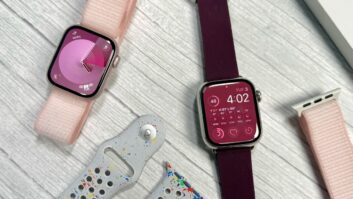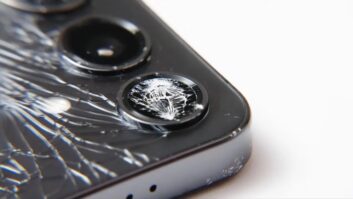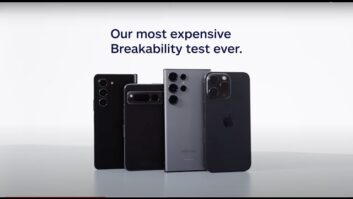The launch of Apple’s iPhone marks a major change in the way cellular carriers bring phones to market.
Until the combination iPod-smartphone came along, carriers controlled the pricing and distribution of their phones and played a major role in designing their phones’ user interfaces. With the Cingular-network iPhone, however, Apple is calling the distribution and pricing shots, said Glen Lurie, Cingular Wireless national distribution president.
The widescreen iPhone, he continued, “is an iPod” whose touch-screen-controlled user interface was developed solely by Apple with the exception of a “visual voice mail,” which displays a list of voice mails received and lets users select the voice mails that they want to hear, Lurie continued.
In return for ceding big decisions to Apple, Cingular will win new subscribers attracted to the iPod experience and boost data service revenues and average revenue per customer because the phone “makes SMS, e-mail and Web browsing easy,” Lurie said. Cingular already has more subscribers than any other carrier, but “we expect to grow our business” with the iPhone, he continued.
The iPhone, whose name is contested by Cisco as a trademark infringement, is “locked and optimized to our network,” but “distribution is owned by Apple,” Lurie explained during a Q&A session with reporters here at CES, where the iPhone was not among the products displayed by the carrier in the booth of parent AT&T.
When it ships in June, the phone will be available only through Apple’s 150 company-owned stores, Apple’s Web site, 2,100 Cingular-branded stores, Cingular’s Web site and the carrier’s direct-mail operation, Lurie said. After that, it will be up to Apple to expand distribution to major consumer electronics retailers, he continued.
In addition, Lurie continued, “it’s an iPod, so Apple sets the price.”
Because “it’s an iPod,” he continued, only the Apple name will appear on the iPhone’s case. The Cingular, AT&T or joint Cingular/AT&T brand names, however, will appear on the device’s display when the phone is turned on and perhaps at all times when the phone’s radio is on, he added.
Lurie described the distribution deal as “unique” in the cellular industry and stressed that it is not an MVNO (mobile virtual network operator) arrangement in which Apple buys airtime wholesale and sells phones and service to end users, thus owning the customer. Cingular customer service reps will be cross-trained in answering Apple and Cingular questions, but when questions get “too detailed,” customers will be handed off to Apple customer service, “and vice versa,” he noted.
The distribution/product deal is a “multi-year exclusive” covering any future iPhone models in the United States and for any U.S. carrier. Apple is free to strike distribution deals with carriers outside the United States, he said.
The phone’s $499 price for a 4GB version and $599 for the 8GB version are with a two-year contract. Existing Cingular subscribers would have to extend their contract by two years to get the phone, Lurie said, without revealing whether the prices are subsidized by the carrier. Some amount of subsidization seems likely, however, given that Cingular’s highest priced phone with two-year contract is the recently unveiled Palm Treo 750 at $399.
Despite the high end-user prices, Lurie said he’s not concerned that the prices are too high. The iPhone will combine three devices that many people already carry: a cellular phone, an e-mail-oriented smartphone and an MP3 player. A 4GB iPod Nano is $199, he pointed out, and a smartphone with capabilities less than the iPhone sell for $150-$200, so $499 for a 4GB iPhone is “absolutely priced right,” he said.
At launch, the quadband worldphone will be equipped with 802.11b/g Wi-Fi and high-speed EDGE cellular data service, but the phone will not access the iTunes music store to download songs or video over the air. That capability, however, is technically feasible, Lurie noted.













